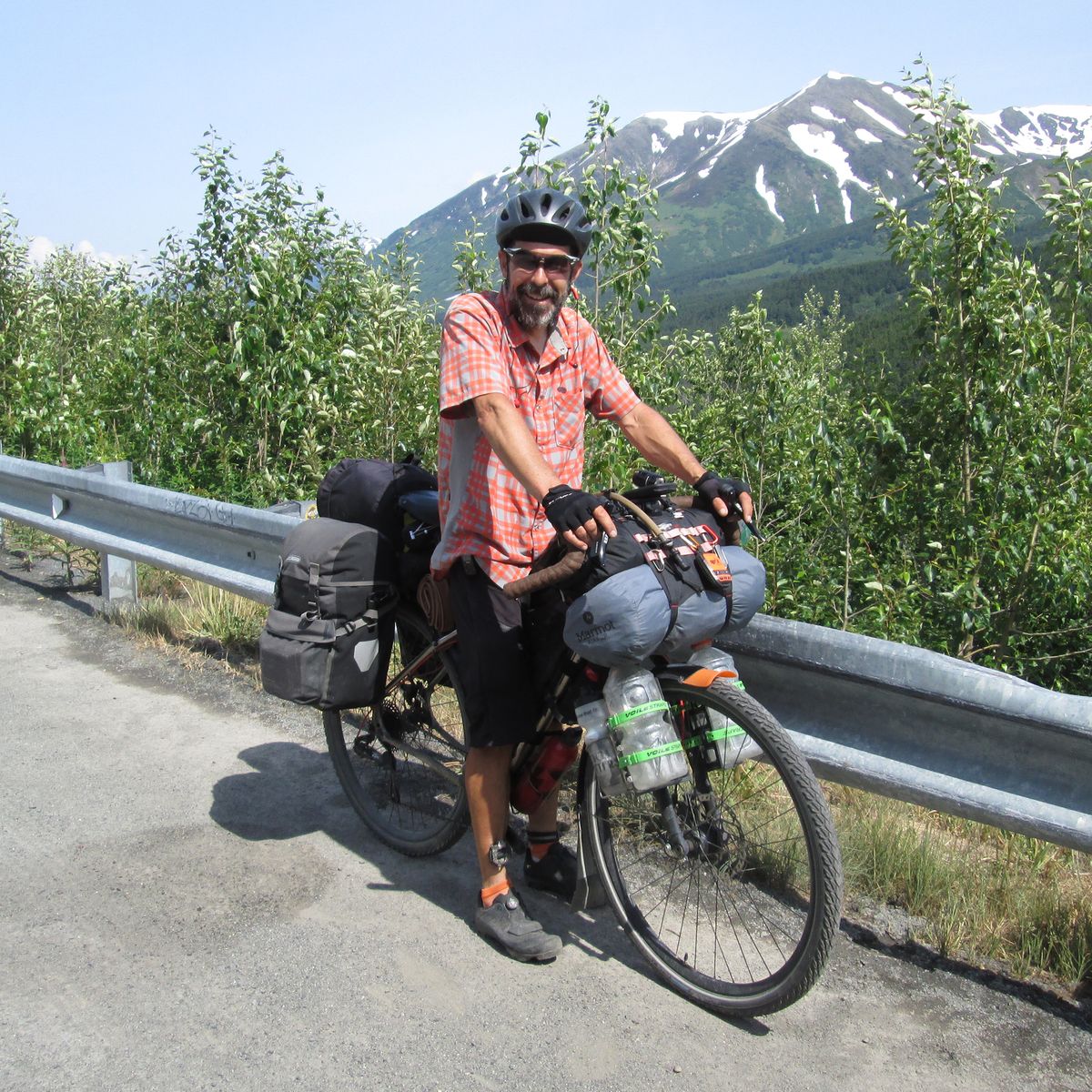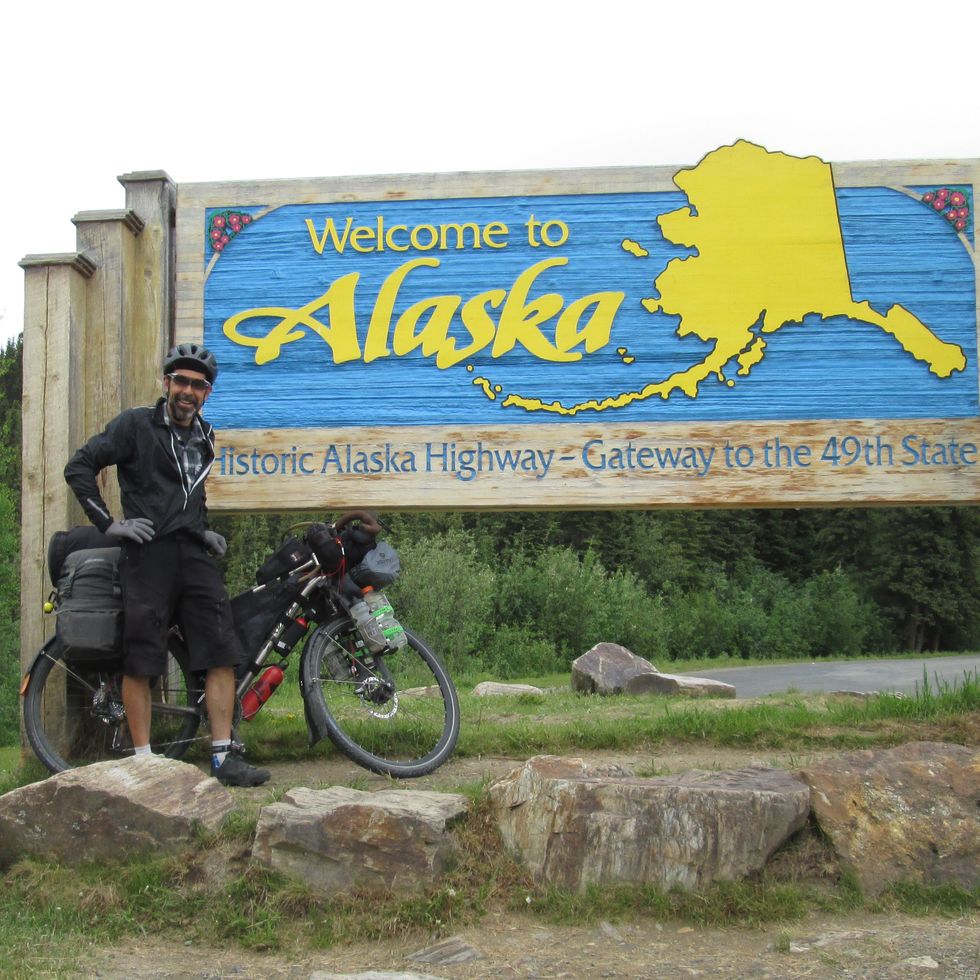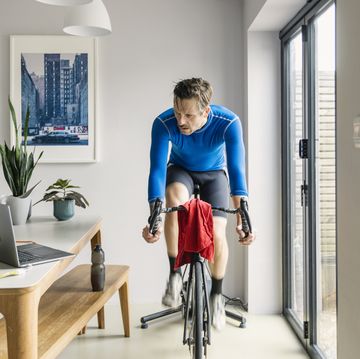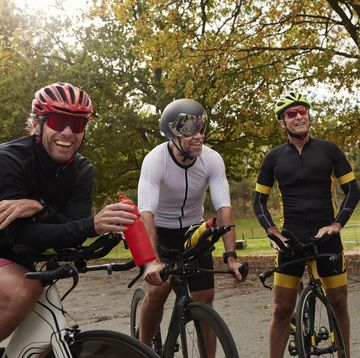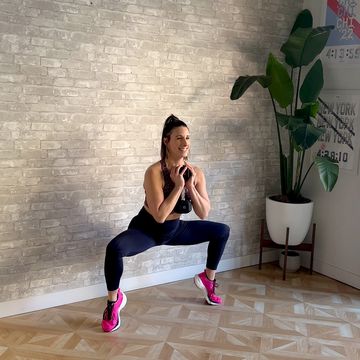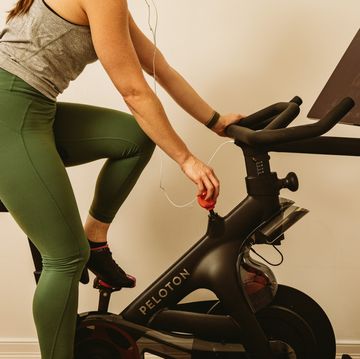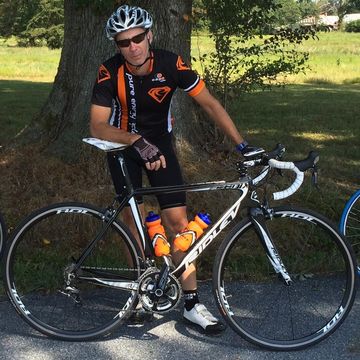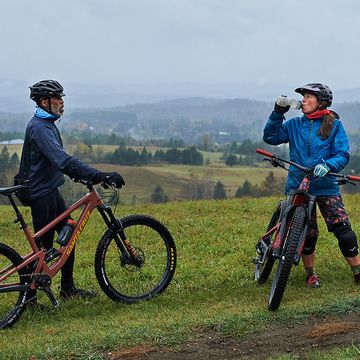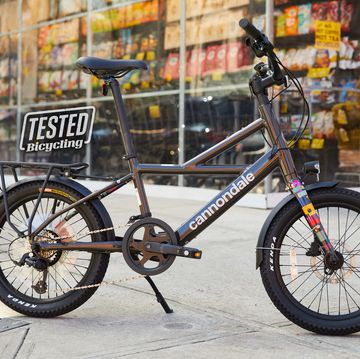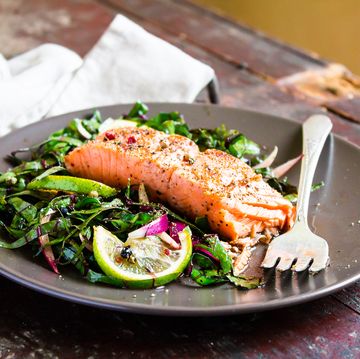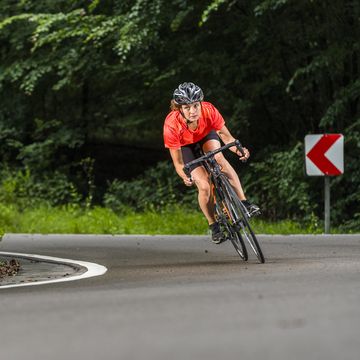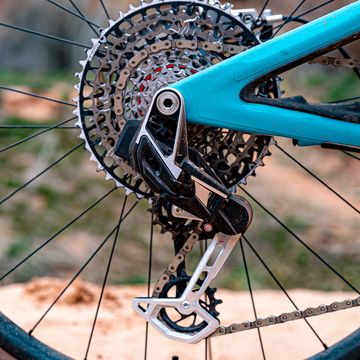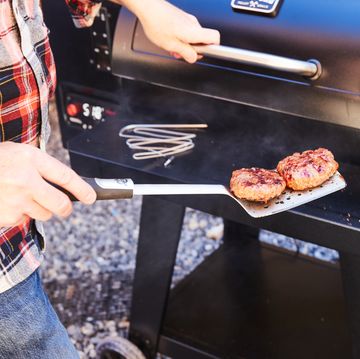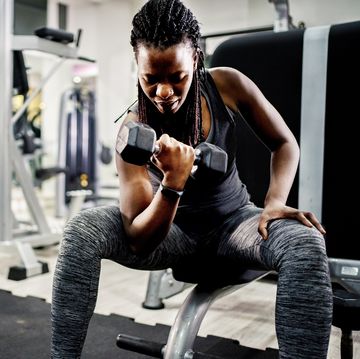Name: Lincoln Steward
Age: 51
Hometown: Nazareth, Pennsylvania
Occupation: Self-employed contractor
Time Cycling: More than 40 years
Reason for Cycling: I cycle not only for the physical and mental health benefits, but also as a way to explore the world and travel in an environmentally-friendly way.
In 1977, on my 5th birthday, my dad rebuilt an old klunker bike from my grandmother’s shed so that I could have a bike of my own. It had a step-through frame, but with primer, black paint, a set of BMX handlebars, and a banana seat, it was the coolest thing I had ever owned. It was my ticket to freedom. I was no longer stuck in the yard. I was free to explore all five streets of our neighborhood, which at the time, felt like I could go anywhere in the world.
The older I got, the further my parents extended my boundaries. This not only allowed me to visit my friends without being chauffeured, but gave me the ability to explore the winding roads through hilly farmland in my little corner of eastern Pennsylvania. Of course, my interest in the bike faded when I got my driver’s license—what I then considered a new, better type of freedom.
More From Bicycling

I rediscovered my love of biking in 2000 when I lost my driver’s license and started commuting to work. At first, it was awful. I was out of shape, and the 3.5-mile slog through rush-hour traffic was miserable. However, once I started getting more fit, I realized that I could take a slightly longer, more scenic route to work, with fewer cars.
I discovered that the bicycle infrastructure around Denver allowed me to go as far as I wanted. The farther I went, the better my fitness progressed, and the farther I wanted to go. I was feeling the same freedom I had experienced as a 5-year-old with the only limitation being my own physical ability.
Eventually, my rides got longer and I discovered organized rides that would have been ridiculous a few years prior. Two of the most notable were the Triple Bypass, a 120-mile grind into the Rocky Mountains covering more than 10,000 feet of climbing and Ride the Rockies, a week-long tour through Colorado offering at least one high-mountain pass each day.
I then bought a trailer to pull behind my bike, which enabled me to do almost anything I used to do with a car. I accomplished my errands without making car payments, paying for car insurance, and without spending a cent on gasoline.
I also got into mountain biking, which gave me the skills to no longer be limited to only pavement. I really was experiencing true freedom.
One time, my friend joked, “there’s no such thing as inclement weather, only inappropriate clothing.” Not being able to drive made me realize that he was absolutely right. I acquired protective gear so that I could ride no matter what the weather. Other than icy pavement, there was no excuse for me to not ride somewhere.
I eventually got my driver’s license back, and returned to Pennsylvania to live closer to my family. Cycling is still the biggest motivating force in my life. Over the last nine years, I have ridden more than 10,000 miles per year, while driving less than 4,000 miles per year. I have done a few cross-country tours, some solo, and one with a partner.
The pandemic got me to plan my latest, biggest adventure. I was not working much, so I rode more than usual. Because of the social distancing recommendations, I made sure to do rides where I would not have to interact with people. This meant carrying enough food and water to sustain myself for however long I was gone and making sure I would be back home at the end of the day.
When the restrictions lifted, I was ready to experience something new, and as a joke one day, I plotted a course from my house in Nazareth, Pennsylvania to Anchorage, Alaska—just to see if my route-planning software could handle a track of that length. After looking it over and realizing that the pandemic taught me that I could handle the solitude of being alone with nothing but my bike, I decided that riding to Alaska and back was exactly what I needed.
I left in April 2022 and witnessed the tail end of winter gradually turn into spring from the seat of my bike. I rode through forests, grasslands, farmland, desert, and alpine tundra. I crossed mountains that made me feel insignificant, and plains so expansive that I could almost understand why there are people that believe the earth is flat.
I experienced an entire year’s worth of weather within a few months, from a freezing cold, snowy, windy day to 110-degree blistering heat without a cloud in the sky; from miserable rains to countless perfect, sunny, and clear days. Over the years, I’ve come to learn that the miserable days are necessary, because if I can fight through them, they make me appreciate the beautiful ones even more.
I met people from all walks of life on my bike, and it seemed every one of them was interested in the story of my travels. In the wilderness of northwestern Canada and Alaska, where the environment makes life harder, I noticed people looked out for each other. If I was pulled over on the side of the road, it was likely someone would stop to see if I was all right, which was comforting.
I also met cyclists on similar adventures and we’d briefly stop to exchange stories of our travels. I camped about half the time, stayed in several hotels, and even received free accommodations from friends of friends, or through WarmShowers, a non-profit hosting app for bicycle tourists.
I covered more than 8,900 miles in 116 days (including two weeks off). For the most part, I was just riding big miles every day.
Cycling really is a magical experience that has changed my life. Aside from the obvious physical benefits, it has also become a type of mental health therapy for me. Sure, I love riding on a good day, but on days when I’m feeling anger, frustration, depression, or anxiety, I channel that energy toward turning the pedals. I forget about my problems and come home a little more clear-headed and ready to deal with whatever challenges life is going to throw my way.
These tips have made my cycling journey a success:
1. Start with local bikepacking routes
To anyone considering undertaking a similar adventure, I would recommend starting with something simple and building from there. My first bikepacking trips were “S24O” (Sub-24-hour overnight). A group of us would leave on a Saturday afternoon, ride to a local campground, camp for one night, and be home by lunchtime the next day.
2. Test your equipment
On local bikepacking trips, if you find that your tent leaks, your sleeping bag is not warm enough, or you did not realize just how much more effort is required to ride a bike with the extra weight of camping gear, it’s not a big deal when you know you will be home the very next day. In the worst case, you might have to make the embarrassing phone call to have someone pick you up and drive you home. However, you do not want to find these things out in the middle of a multi-day tour, when you may be several hundred miles from home.
3. Learn basic bike maintenance
At minimum, you need to be able to fix a flat tire—probably the most common mechanical malfunction in cycling. Minor gear adjustment methods are also good to know, along with basic troubleshooting techniques. Ideally, your bike should operate silently, and if you hear an abnormal noise, you need to be able to determine what is causing it, and if it is going to lead to bigger mechanical problems if not properly dealt with. The further away from civilization you intend to travel, the more important this becomes, or you could end up walking, pushing your broken bike for miles.
Lincoln’s Must-Have Gear
→ Salsa Fargo Apex: Of course the bicycle is the most important piece of gear. I recommend not worrying about weight, but rather comfort. Carbon fiber may be light and stiff, but you will feel every bump in the road. I ride a 2017 Titanium Salsa Fargo, a drop-bar mountain bike. The front end is slightly elevated, making it a more comfortable, upright sitting position than a road bike, yet the wide, flared-out drop bars offer more hand positions than a flat-bar bike. I feel the frame offers a better ride feel than carbon frame. I chose titanium over steel because I ride all year round; Pennsylvania road salt will destroy a steel frame if you (like me) are not the best at cleaning things religiously.
→ TRP Spyre Mechanical Brakes: Like most modern bikes, mine has disc brakes, but I use cable-activated brakes instead of hydraulics. As I do all my own maintenance, cables are much easier to work with. Also, a spare cable is a minimal thing to carry and can be repaired trailside; a problem with hydraulic lines (however unlikely) will almost certainly mean a trip to a bike shop. On a tour, this may not be readily available.
→ Garmin Edge 1030 Bike Computer: Navigation is also a key ingredient to touring. I use a Garmin 1030 to guide me along my route. It has a large touch screen, very long battery life, and a slew of other metrics to geek out on if you’re into ride data, including speed, elevation, cadence, heart rate, and much more.
We want to hear how cycling changed you! Send your story and submit your photos to us via this web form. We’ll pick one each week to highlight on the site.
Jennifer Acker joined the editorial staff of Runner's World and Bicycling in January 2022. A former freelancer writer and NCAA runner, she started running as a kid and basically never stopped. She also loves outdoor adventures, like hiking, skiing, and mountain biking.
